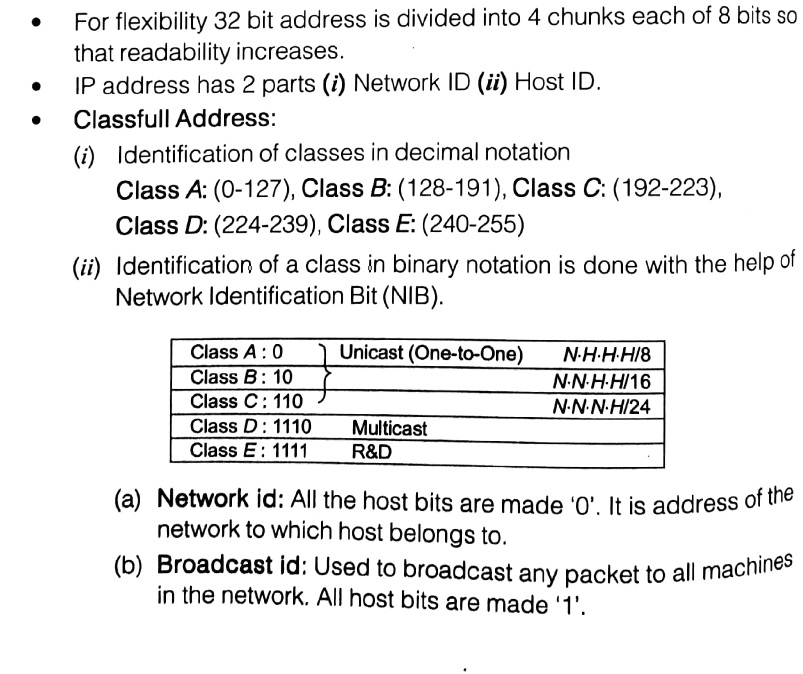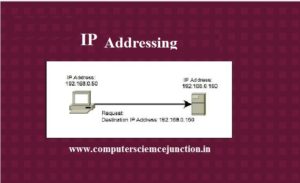Table of Contents
IP Address Classes
In this IP Address Classes-based tutorial today, we will learn about IP address-related concepts such as IP Address Meaning, IP Address Classes, types of IP address, Classful Addressing, and loopback IP address and its use.
IP Class Addressing is an important topic for the GATE (CS/IT) exam. Some questions based on logical addressing are always asked every year in the GATE(CS/IT) and UGC NET exam.
GATE (CS/IT) aspirants must read this tutorial completely and give their feedback in the comment section.
Frequently Asked Questions
- What is IP address meaning?
- What does IP Class Mean?
- What is a class C IP Address?
- How do I find my Loop Back IP Address?
- What are the three major classes of an IP Network?
- What is a Class C Network?
- What are different IP address classes?
- What is the IP Loop Back IP address?
What is IP Address Meaning?
An IP address is also known as a logical address, ip address, the meaning is assigning an address to a computer or host connected over a network. Ip address is the address assigned to each host present in a network. In IP addressing scheme, two devices can not have the same IP address.
IP Address Specification
In the ip addressing scheme, two hosts cannot have the same IP Address. An IP address is a 32-bit binary number, but generally, for representation purposes, an IP address is represented as four values in the decimal number system. Each of the four represents the 8 bits from 0 to 255 and is separated by a decimal point.
For example, 200.150.85.95 is a class C IP Address.
IP Address Classes
There are five different ip address classes. Each of the ip address classes has its specific range for defining the IP addressing. This type of ip addressing is also known as classful addressing.
Class A IP addresses begin with 1 to 127 in decimal.
Class B IP address in begin with 128 to 191 in decimal
Class C IP Address began with 192 to 223 in decimal.
Class D IP address beginning with 224 to 139 in decimal.
Class E IP Address begins with 240 to 254 in decimal.
We can find it by examining the first four bits of the given IP Address to which class an IP address belongs.
The address begins with 127 are reserved for loopback ip address or internal testing on the local host. Address 127.0.0.1 on a host points to itself.
Here we are describing the IP specification for each type of class as discussed above.
Class A: Class A is used for the large network.8-bit network address and 24-bit host address. There are approximately 16 million hosts per network, and a maximum of 126 ( 27-2) Class A networks can be defined.
Here remember one thing that two are subtracted. The reason is that IP address 0.0.0.0 is reserved for use as a default route, and IP address 127.0.0.0 is reserved for the loopback function.
Each class network can support a maximum of 16,777,214( 224-2) hosts per network. Here two is subtracted because all zeros are reserved to identify the network itself, and all 1’s are reserved for broadcast address.
|
0
|
7 bits for network ID
|
24 bits for HOST ID
|
|
1
|
0
|
14 bits for network ID
|
16 bits for HOST ID
|
|
1
|
1
|
0
|
21 bits for network ID
|
8 bits for HOST ID
|
|
1
|
1
|
1
|
0
|
28 bits for some sort of group addresses
|
|
1
|
1
|
1
|
1
|
28 bits
|
Unregistered IP Address: This is also important to know that a private network is not a part of the internet. It is not necessary to register a network address.
For a network that is isolated from the internet, the network administrator can use the following IP address reserved for the private network.
Class A: 10.0.0.0to 10.255.255.255
Class B: 172.16.0.0 to 172.31.255.255
Class C: 192.168.0.0 to 192.168.255.255
Anyone can use any IP address to set up an internal IP Address, such as Lab or Home network.
Key Points about IP Class Addressing
Some key points to remember about IP Class Addressing are as shown in following picture


Conclusion and Summary
In this tutorial, We have discussed the concepts of IP Address, Parts of IP Address, IP addressing Classes, and how to calculate the number of subnet and number of hosts per subnet.







